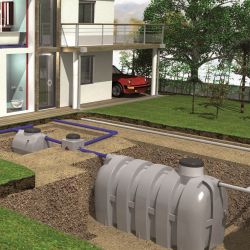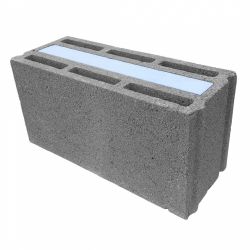So what are the main drivers of change?

The United Nations Sustainable Development Goals (SDGs) have a significant impact on the construction sector and its targets for reducing energy consumption, particularly in terms of how technology is used to improve efficiency energy, the use of sustainable and recycled materials and biodiversity.
The European Green Deal, which is linked to many other legislative documents, includes initiatives to build and renovate in an energy-efficient way. It also contributes to ensuring that the design of new and renovated buildings is in line with the needs of the circular economy.
The volume of guidance and policy documents can be overwhelming. However, they all have in common the need to use consistent methodologies to enable meaningful comparisons.
The growing role of life cycle assessments
With sustainability now a priority for many organizations in the sector, the need to assess the environmental impact of construction projects has increased. Life cycle analysis (LCA) is a method that allows a complete analysis of the environmental impact of a product or material used in a building throughout its life cycle, from its manufacture to its installation, maintenance and eventual demolition.
Through LCA, builders can make more informed decisions about the materials and processes they use, with the goal of creating more sustainable and efficient building practices. However, many still struggle to understand how they can collect the data they need for this purpose and where the responsibility for LCA lies in the construction value chain.
What is an ACV?
The LCA of building products takes into account a wide range of environmental factors, including energy consumption, greenhouse gas emissions, water use and waste generation. These factors are used to assess the overall environmental impact and performance of construction projects.
Part of doing the LCA of a wall, for example, is to consider its thermal transmittance (the rate of heat transfer through the material, also known as the U-value) versus the energy needed. to heat/cool a building, as well as the emissions resulting from this energy production.
The responsibility for measuring the LCA of this wall lies with several stakeholders. The first point of information is the manufacturer, who must provide precise data on the raw materials used in the product and on their transport. Contractors and architects are then required to state how the product is used in a construction project. Finally, those responsible for maintaining the building must measure its performance over time.
Data processing challenges in LCAs
However, there are barriers to the widespread adoption of LCAs. One of the most important concerns data collection and consistency. The complete and accurate data needed to determine the environmental impact of different materials and processes is often lacking.
First of all, not all manufacturers provide the data necessary to assess the effects of their products on the environment. This may be because they do not have the data they want or they simply choose not to disclose it.
Another challenge is the risk of discrepancies in the data collected, such as outdated information or differences in data sources and collection methodology, which can lead to incorrect or incomplete assessments of results.
The large number of companies and stakeholders involved in a construction project often complicates the information gathering process.
Solving the data collection puzzle
Changes are underway in the industry to address these data collection issues. As an example, ISO, the international standards body, has published the ISO 22057 standard which describes a standardized numerical approach, using the description model methodology to exchange EPD data for construction products.
This data model provides all parties with a common technical language that allows them to collect and share large amounts of accurate information. It does this by providing industry players with accessible data based on international standards and compliant with industry and national regulations. This now includes environmental data, currently available in the standardized EPD (Environmental Product Declaration) format.
In the past, the lack of standardized data has proven to be a major barrier to performing complete and accurate LCAs. Today, organizations can use tools such as EPDs, data dictionaries, and data models to develop a common method for describing objects, products, systems, materials, and assets. This removes the ambiguity of language in the exchange of information and creates a holistic source of data that organizations can draw from.
Other standards and methods are gradually being put in place to better collect information and better structure it. For example the ISO 7817 standard (of which the first part is available and of which parts 2 and 3 are to come), or the LOIN concept introduced by the ISO 19650 standard and defined more precisely by the European standard of the 17412 series.
The systems approach to life cycle assessments will play an important role in helping construction industry players achieve their net carbon emissions targets. Organizations not only need to understand the methodology for performing these LCAs, but also think about how they can make their data accurate and accessible for the benefit of other industry players.
This is only possible if we describe things coherently.
Tribune by Enzo Blonk, Head of Market Europe at Cobuilder (LinkedIn).
 Elevating your brand: a sustainable marketing strategy in the era of generative AI
Elevating your brand: a sustainable marketing strategy in the era of generative AI
 Digital twins to modernize the cities of tomorrow
Digital twins to modernize the cities of tomorrow
 Reinventing housing in France: the challenges of global expansion in a changing market
Reinventing housing in France: the challenges of global expansion in a changing market
 Guillaume Kasbarian, Minister for Housing: a pragmatic profile that will effectively respond to the challenges of citizens and professionals
Guillaume Kasbarian, Minister for Housing: a pragmatic profile that will effectively respond to the challenges of citizens and professionals
 Old property prices are still falling but a recovery is taking shape
Old property prices are still falling but a recovery is taking shape
 A report on anticipating the effects of +4°C warming reaffirms the need for housing adaptation
A report on anticipating the effects of +4°C warming reaffirms the need for housing adaptation
 AI is already revolutionizing businesses in architecture, engineering, construction... according to Autodesk's "State of Design & Make" study
AI is already revolutionizing businesses in architecture, engineering, construction... according to Autodesk's "State of Design & Make" study
 The average rate of real estate loans starts to fall again in the 1st quarter, according to Crédit Logement
The average rate of real estate loans starts to fall again in the 1st quarter, according to Crédit Logement














